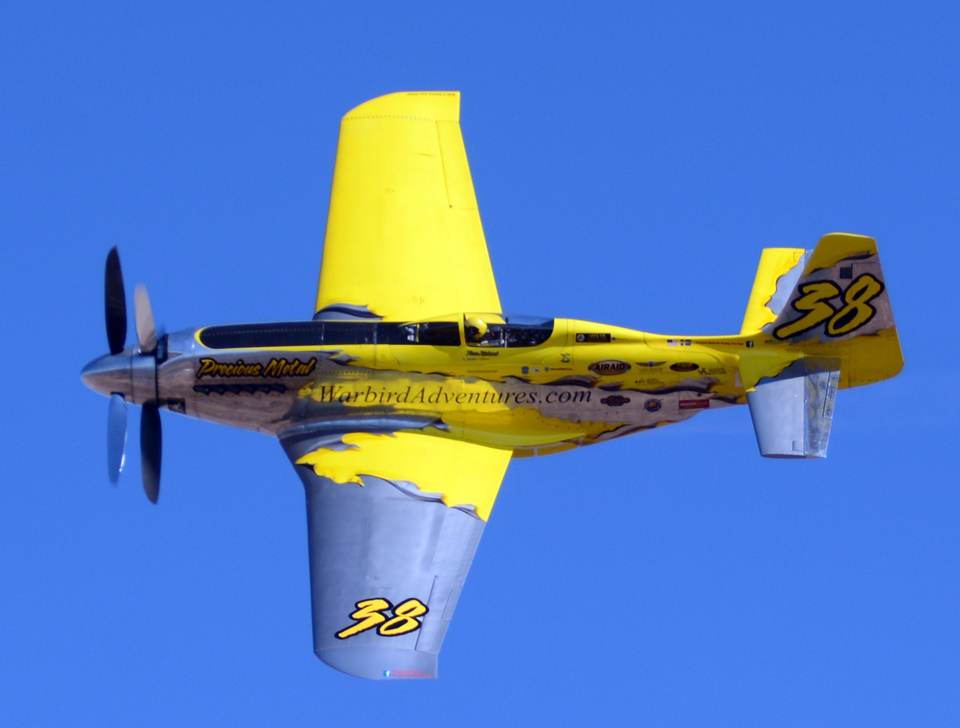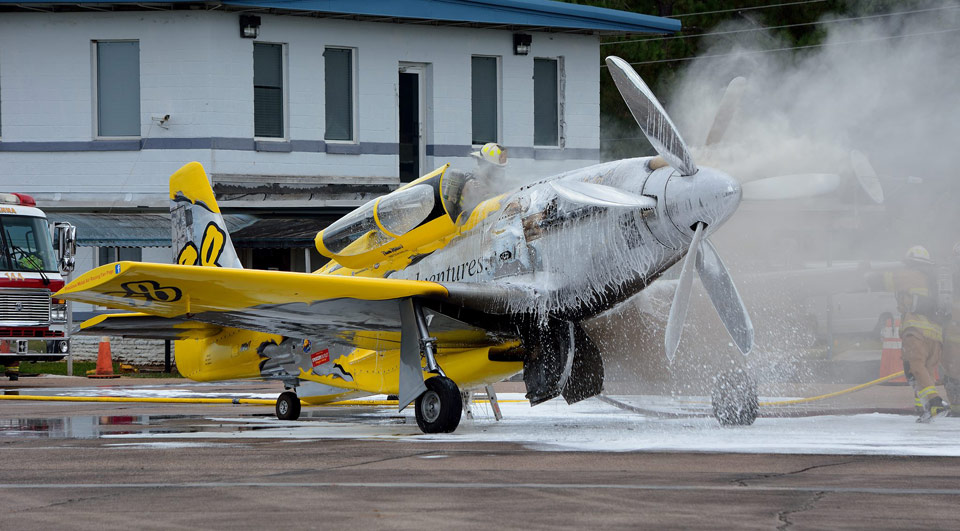Precious Metal Taxi Fire
November 2015 - Since its debut in 1988, the P-51 Mustang Precious Metal has been a racing aircraft challenged by luck and circumstances that have dogged its contention for Reno Gold. While not a restored warbird, or even a plane that was truly modified into its current state, it deserves mention in the Warbird Report. You see, the structure of Precious Metal is P-51, and should it not be rebuilt into a racing aircraft, it will probably immigrate to Oshkosh as a contender for Grand Champion Warbird someday! (It has happened before!) In any case, on to Precious Metal’s news.
In the week leading up to Reno, Thom Richard was feeling confident. The plane was running well and the previous year flew the fastest ever Griffon Mustang lap at Reno at more than 463 mph. Setting off from base in the afternoon, the plane was in fine form and, landing at its first fuel stop, seemed to be running well.
After fueling and checking the weather, it was agreed it would be best to wait for the team truck and get the plane into a hangar for the night. “Precious is all digital now, and reading plugs and downloading information from each flight is essential for safe, manageable performance data from each flight,” said Richard, the pilot and owner of the racer. “I started the plane to taxi to the other side of the airport and, after a very short time of ground running, saw the ramper waving the fire signal and pointing at the belly of the aircraft. As I began to look at the panel and look outside for a positive indication of what was signaled, I saw flames licking up over the wing, and made the decision to shut down and abandon the aircraft.
“The fire was persistent from the landing gear area and, while waiting for the fire crew, continued to burn around the belly and gear of the plane. The Fuel Safe hoses that house the fuel lines to and from the engine never burned through, and thus saved the aircraft from further damage. That product simply performed superbly, and after 10 minutes of direct exposure, certainly proved its durability under fire. After the trucks arrived, we foamed the plane and made the aircraft safe for storage. Because I had another racer to fly in the F1 class, we headed for Reno after putting Precious Metal into a hangar. The team is now looking over the racer and deciding on future plans for the famous P-51.”
Historically, this was the second Mustang built to accept a Rolls Royce Griffon engine, and the only survivor of the three so modified. The Mustang with a Griffon engine modification was attempted by Rolls Royce in World War II but never completed. Fuel consumption with a Griffon is much greater, so the valuable range of the Mustang was thought too great to sacrifice. Griffon-powered Spitfires defended areas with superior interceptor speed and climb, but were unable to fly long or even medium-ranged missions.
Today, Griffon engines only run on Spitfires and Fireflys, with the Mustang Precious Metal being the sole modified Mustang. The previous world air speed record holder before Rare Bear was the beautiful Griffon-powered Red Baron RB-51, at 499.017 mph. Visit the Precious Metal website and lend a hand if you feel inclined. Good luck to Richard and the team during the rebuild process.


